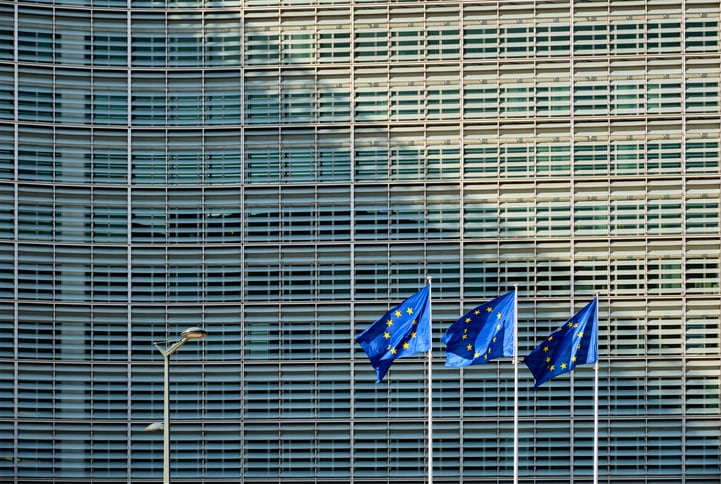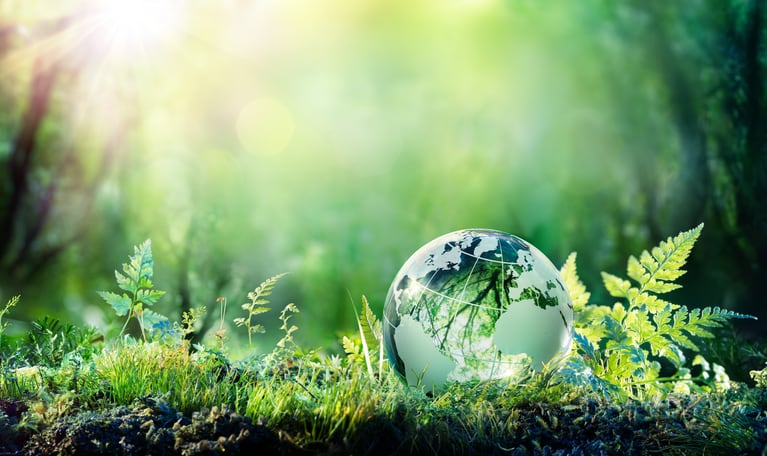In December 2019, the European Commission unveiled its broad-reaching European Green Deal that aimed to steer Europe to becoming the first climate-neutral continent by 2050 and enshrine climate neutrality into law. A European Climate Law Regulation – set to outline more specifically how the region could achieve climate neutrality by 2050 and slash net greenhouse gas emissions by 55% before 2030 – was set to be formally published in the coming months.
So, what role did beauty have to play in this wider green EU push?
Cosmetics and toiletries represent 5% of European consumer goods
Europe’s cosmetics and toiletries industry represented 5% of the surging €2 trillion ($2.4 trillion) overall consumer goods market in the region, according to GlobalData, with a forecast value of €101.6bn ($121.bn) for 2021. And so, Carmen Bryan, consumer analyst at GlobalData, said the category remained an important piece of the puzzle.
“Take advantage of this opportunity. This is a massive industry shift. However, it is also a natural progression as awareness regarding the impact of climate change grows,” Bryan told CosmeticsDesign-Europe.
“…The [beauty] industry is moving in a greener direction, pushed by both consumer demand and government regulation. It is therefore important for companies to get the early-bird advantage, adjusting their operations to these requirements now, rather than later in the decade when it becomes a necessity,” she said.
Bryan said “a fair number” of green initiatives had already been kickstarted across beauty, largely fuelled by rising consumer demands; and these demands would continue to fuel the latest push towards carbon neutrality. “As transparency trends pick up, and consumers increasingly want to know about companies’ full operations, demand for carbon neutral supply chains has also accelerated.”
So, was beauty ready for the transformational push to become carbon neutral?
Beauty does have a ‘leg up in the race’ towards carbon neutrality
“Certain industries align more easily with these green initiatives,” Bryan said. “Although carbon neutrality is still emerging within beauty, the industry’s alignment with ‘feel good, look good’ lifestyles, as well as the already established cruelty-free and vegan claims, gives it a leg up in the race to go carbon neutral.”
Carbon neutral claims in beauty, for example, were often associated with “key values” consumers looked for in the category, she said, including ethical and social positioning.
According to GlobalData Q1 2021 consumer survey conducted in March, carbon footprint was a key consumer priority and decisive factor when purchasing a product. Specifically, 20% of consumers stated information about carbon footprint was an essential purchasing driver in beauty and grooming.
Within this, Bryan said that “brand familiarity” and “trust” were particularly important for consumers in the beauty and grooming category, with many inclined to accept new environmental product launches or initiatives from brands they knew and were loyal to.
Industry’s move to becoming carbon neutral, however, would not be without its challenges, she said.
Securing supply chains and costing capital and time resources
“The challenges come from within the supply chain and outsourcing,” Bryan said. “Many independent beauty brands may not have their own manufacturing facilities, which can create challenges in terms of the traceability and monitoring of their suppliers’ carbon output.”
That being said, higher margins in beauty gave industry “a little more wiggle room” in its quest towards carbon neutrality, she said. And, according to the GlobalData Q1 2021 consumer survey, 42% of consumers considered higher quality products and ingredients as ‘value for money’ in beauty and grooming. “Consumers will trade up for products with ‘green credentials’ as long as the quality of the product is not impacted,” she said.
Moves from big players, like L’Oréal Paris' goal to reduce overall CO2 footprint by 50% per finished product by 2030, would also “serve as encouragement for smaller brands to jump on board”, Bryan said.
“…Although the capital- and time-resources involved in these initiatives are considerable, in the long-term it will prove to be a strong investment.”
This week, CosmeticsDesign-Europe presented and participated in an online webinar on Ethical Consumers as part of the Cosmetics Europe Annual Conference (CEAC) 2021. This webinar can be watched on-demand now, providing a deeper insight into the transition from green to clean to conscious and ethical beauty.




